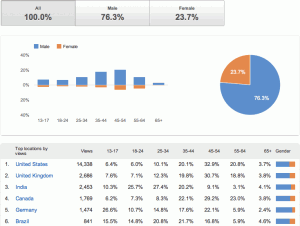OK so I am coming to the party a bit late with this one. The new upgrade to YouTube’s video analytics was unveiled in December last year. However I have found myself searching through YouTube on a more regular basis recently (Most likely due to the increase in work deadlines). I realised that the new YouTube analytics upgrade is certainly meeting some of its objectives.
I find many of the recommendations for video’s to watch are better tailored to my previous viewing habits.This is not only beneficial to the viewers but also imperative to YouTube and its up-loaders. By having video’s well tailored to the viewer it allows them to remain “locked” into the website moving more confidently from video to video, a hypothetical “Stepping stone” situation. It is obvious therefore that with recommended videos accurately meeting viewer requests based on their history and characteristics it is going to prolong the consumers “Stepping stone” scenario.
It is arguable that the above is more beneficial to the viewer than the up-loader. YouTube analytics however does not simply allow for better recommended content, it’s key criteria or value is in the increased amount of cache tools that are placed at the hands of up-loaders and in turn marketers. One major development is the ability to analyse which channels on the internet drive the most engaged viewers to a video. This allows for increased value for any marketer who wishes to target their selected personification. The system also allows for marketers to see at which point viewers may lose interest in the video, A crucial tool which allows for a better understanding of the businesses Online target market.
To sum up it is apparent that the upgrade to YouTube’s video analytics is certainly a giant leap forward, both for the viewer and the up-loader. It is representative of the modern eras new form of Online marketing; using a viewers history to allow for better increased tailoring of both adverts and recommendations. It is not just YouTube that has adapted this form of data collection, Google and Facebook have adapted similar systems of web analytics. In this Blog post I haven’t analysed the obvious ethical concerns that arise from this type of analytics and data collection but it is certainly a concern. Ethical concerns or not this type of Online tailoring seems to be the trend that will continue in the near future at the very least.

